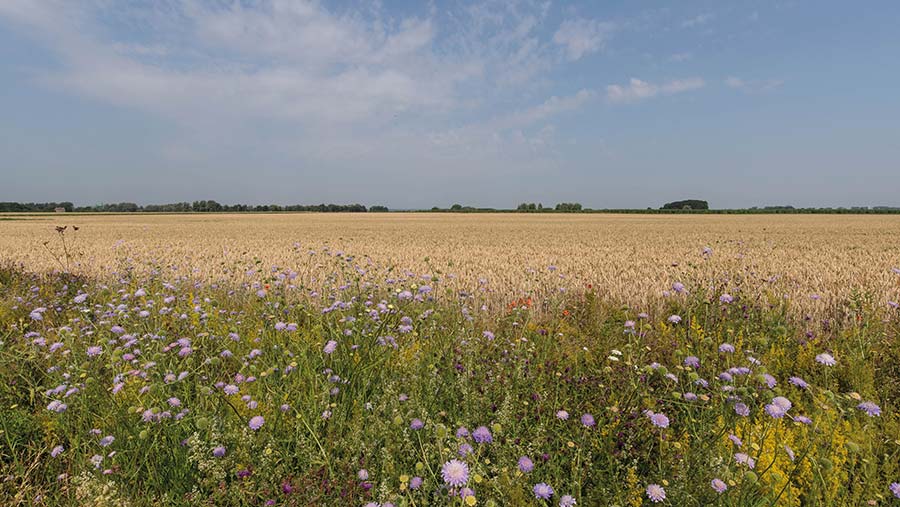Opinion: ELM must be simple, flexible and come with training
 © Tim Scrivener
© Tim Scrivener The new Environmental Land Management (ELM) scheme is on its way, and I’m sure many are looking forward to dealing with the intricacies of a scheme that promises so much.
Having worked for the Game and Wildlife Conservation Trust for 29 years, I’ve seen most of the schemes come and go, each time getting more and more complicated.
See also: What’s on offer for farmers as the SFI takes shape
About the author

Prof John Holland is head of farmland ecology at the Game & Wildlife Conservation Trust in Fordingbridge, Hampshire.
Here he sets out his vision for a future environmental scheme for farmers.
That need not be the case. It’s not rocket science to encourage biodiversity on farms and to help protect the environment. Keeping it simple will also make it more attractive to more farmers and so achieve a higher uptake.
Indeed, this was the whole idea of Entry Level Stewardship, although in that case many took the easiest options that fitted in with their farming, such as grass margins, rather than the more beneficial ones, such as wildflower margins.
I would also hope that by being simple, more time could be devoted to getting it right, which also depends on providing good training.
We have spent billions on agri-environment schemes over the years, but how much of the money has been spent making sure users know what is expected and how to achieve it?
Yes, there have been detailed guidance documents and there are some excellent advisers. But in a recent study my team conducted, looking at annually cultivated and floristically enhanced margins, very few were hitting the mark.
The schemes have also received some stick for not being flexible enough. So why not hand back the initiative to the farmers and their advisers? We know from the massive interest and uptake of the cluster approach that many farmers like this bottom-up style, rather than top-down.
So that’s my recommendation for ELM – keep it simple, allow flexibility and provide training, with farmers and their advisers having more ownership.
In terms of simplicity, there are a number of key habitats that can deliver most for farmland biodiversity, including wild bird seed mix, wildflower areas, flower-rich grassland, and hedges allowed to flower and fruit.
It’s also good to protect and enhance hedge bases to provide tussocky grasses and flowers, while managing deciduous woodland to allow an understorey to develop. And there should be ponds, herb-rich banks alongside flowing water, flower-rich grassland and shrubby areas.
Weeds are also important for many insects which feed on their leaves, flowers and seeds, so finding a way to tolerate more in the crops will also help.
There are of course other habitats, and there should be flexibility within the scheme to go with other options, according to what the aim is.
In terms of the environment, soil carbon is the big one, and farming has a huge opportunity to quickly lock up vast amounts of carbon and improve soil fertility, its water holding capacity and its workability. The approaches to achieve this include minimum tillage, and planting cover crops and grass leys – in other words, regenerative agriculture.
How these approaches are best achieved is to place them in the hands of the farmer and their advisers, as they know what works best on their land. The latter could also have the responsibility of signing off payment, rather than the RPA.
As for training, some of these habitats can be tricky to establish, so have training events, perhaps run by other farmers who have sussed it out, as evidence shows that peer-to-peer learning is preferred. This already happens, but make it nationwide, accessible and perhaps even compulsory.
With the Sustainable Farming Incentive pilots rolling out, let’s not miss this golden opportunity to target advice and develop a streamlined scheme.
